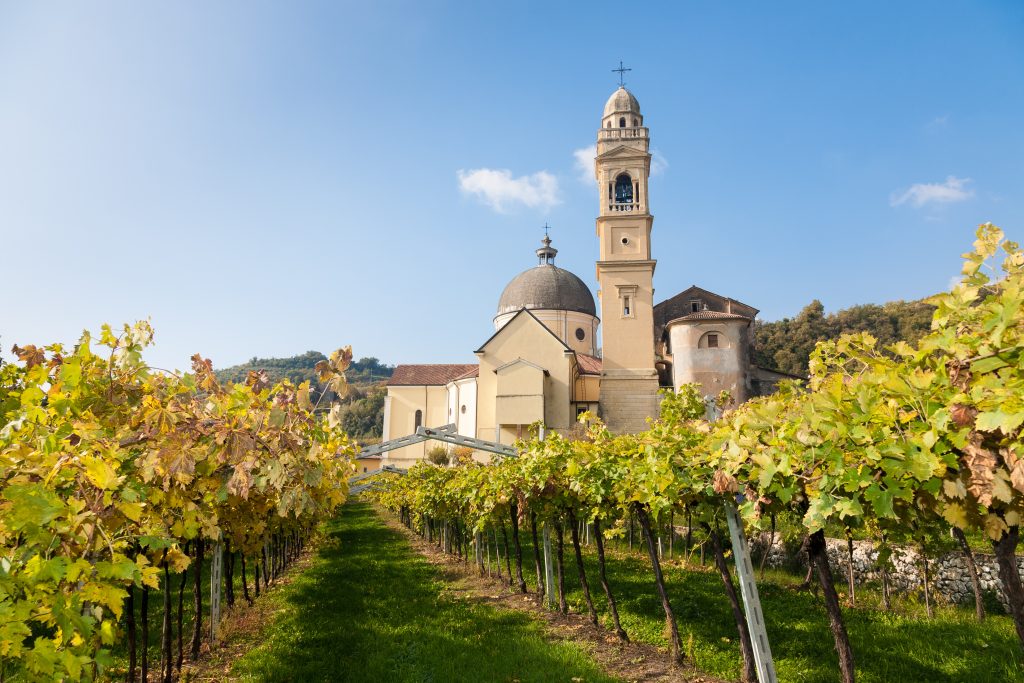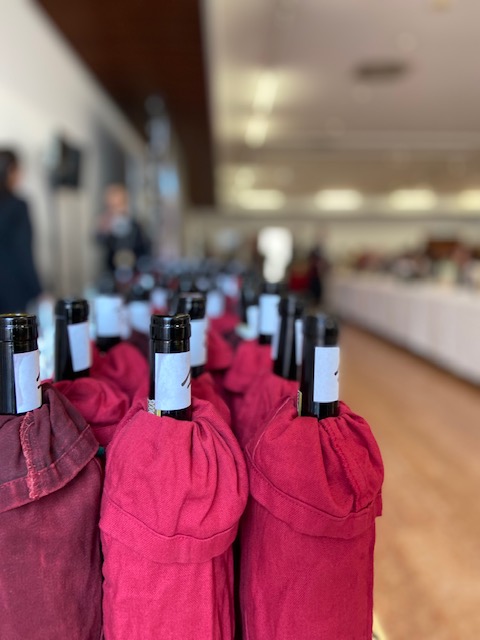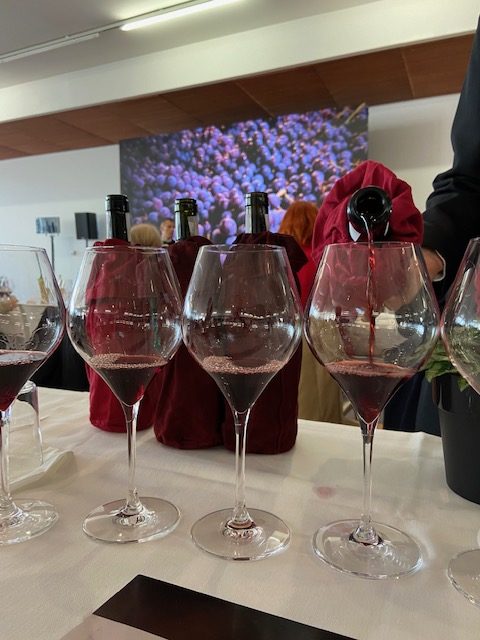Amarone: a passion for ‘appassimento’
Valpolicella is passionate about ‘appassimento’. The strong oenological bond that unites this ancient valley of Italian wine to this particular winemaking method is undeniable – and indeed forms part of its identity.

It is a bond that has built a territory known throughout the world, as well as an agricultural and social fabric, made up of fruttai (cellar rooms to dry grapes) and arele (the traditional bamboo mats) of vines, of knowledge handed down from generation to generation, and increasingly scientifically verified.
It was precisely this intense and secular intertwining that led the Consortium to embark on the path of candidacy for UNESCO Intangible Heritage, which entered the final phase of approval precisely in the days of the Amarone 2023 preview. According to Pier Luigi Petrillo, coordinator of the scientific committee, professor, and director of the UNESCO chair on intangible cultural heritage at the Unitelma Sapienza University of Rome, “the dossier highlights that it is a technique that reflects the social, political, economic history of this territory and shows its evolution. The deep cultural and identity roots define the rural architecture of Valpolicella itself: a know-how that has identified this community for over 1,500 years.”
It is easy to understand how a theme of this magnitude easily stole the stage at the nineteenth edition of Amarone Opera Prima. And this shouldn’t come as a surprise. UNESCO candidacy aside, the withering process and the different ways in which producers implement it – duration, humidity, temperature, ventilation and so on – together with the usual wine making choices significantly determine the final result in the bottle.
It has turned into an opportunity for understanding something that has often been taken for granted but can be transmitted from the older generation to younger ones with renewed attention. Preserving traditional techniques might sound dusty and old but not for appassimento: sold and new generations see this as a much sought-after winemaking method.

The stats for Amarone speaks for itself. According to the Nomisma Wine Monitor survey carried out for the Valpolicella Consorzio, although in 2022 Amarone suffered a contraction in volume terms of 7.2%, the value of Amarone rose 4% to approximately € 360 million ex cellar. It is particularly strong on the domestic market – which accounts for about 40% of total sales – with both volumes and values rising, by +1.5% and 7.4% respectively, although exports saw a 13% decline in volumes, against a 1.8% rise in value. Exports are driven in United States market, which accounts for 24% of value sales, followed by Canada and Switzerland. And although Germany, Denmark and the UK markets have decreased, sales in Sweden and China are still increasing.
We are therefore talking about a powerful appellation, which is teaming up and which has obviously found a winning method of communication. Even in the interpretation of market tastes and climate change, which are the main focus for most wineries these days. Hence wines are becoming slender and slender; less alcoholic, with lower residual sugars and way more terroir driven. despite the intervention of a concentrating contribution that drying brings with it. A considerable effort, also in the light of the meteorological challenges (one above all, the rise in temperature), which for example is forcing wine makers to anticipate the days of appassimento and to reduce the drying period from the classic 100 days to at least a third.
The 2018 vintage was a balanced ones: although hot, there as plenty of rain to ensure a healthy harvest resulting in berries full of sugar and anthocyanins (colour), but lower than average acidity. But here is where appassimento comes in, by concentrating not just the sugar levels in the berries but everything else, including acidity, tannins and aromas. Clearly what this vintage is showing is the higher degree of skills and awareness these wine makers have been implementing in the last 15 years.

Tasting notes
Out of the 67 samples of Amarone della Valpolicella 2018 below are a dozen wines, both classic and modern in style, from both well-known and lesser-known names which showcasing some of the best Amarone.
Partner Content
Bertani Amarone della Valpolicella 2018
- Dry roses, succulent dry berries with loads of botanical herbs and some enticing tar and medicinal herbs. Very elegant with a liquorice and tea tree oil complexity and the purest black cherry driven mouth. This is a classic style with a very low residual sugar and some austere traits but also one with a serious aging potential.
Ca La Bionda Amarone della Valpolicella 2018
This is a “Burgundian” style Amarone. With with some forest fruit, forest floor, sweet roots and a vanilla touch. On the palate the wine shows some oak spices and a marmite touch which blends perfectly with some sweet and round black fruit. Smooth, juicy and very intense.
Corte Figaretto Amarone della Valpolicella 2018
Grace, beauty, power and elegance. This wine shows some serious balsamic notes, eucalyptus, bay leaf and a black berry driven fruit touch. The mouth is pure energy with the most defined fruit and a really saline finish. An established winery with more and more attention to details.
Roccolo Grassi Amarone della Valpolicella 2018
A powerful Amarone with some black cherries, liquorice and dark chocolate which all seem to develop more on the palate then on the nose at the moment. The intriguing part of this wine is the abundance of juice and a well-structured tannic grip.
La Collina dei Ciliegi Amarone della Valpolicella 2018
Prunes, black cherries and flint. An extremely fruit driven and exotic nose. The mouth of this wine is extremely voluminous, then black fruit driven aromas come back on the palate but with more pronounced balsamic action. Smooth, round, silky but also with a pretty vibrant finish.
Massimago Corte Gastone Amarone della Valpolicella 2018
Delightful strawberry jam and white pepper with, white pepper. The taste drives towards darker fruit and a train ride to an oriental spice market. Very balsamic like an Amarone should be but also with a sea breeze and flinty complexity.
Pasqua Amarone della Valpolicella 2018
Smokey, balsamic with an extremely focused blue and red driven fruit. I love the shiitake mushrooms and bay leaf complexity blending with some orange zest and an irresistible succulent and reactive finish. A very balanced Amarone, like a tightrope walker with power on wine side and elegance on the other.
Selùn Fiori del Pastello Amarone della Valpolicella 2018
Cardamom, lemongrass, forest fruit and juniper. And again cocoa blueberries, liquorice and leather. A very extractive style Amarone which melts down easily its exuberance with an amazing energy and juiciness. A new addition to my Amarone radar worthwhile following up with.
Tenuta Santa Maria Amarone della Valpolicella 2018
Austere at the beginning, this wine needs time to open up but it exudes a lot of nobility and generosity at once. Great thyme and dry roses with a prune and tobacco note. A very good juicy and vibrant finish.
Valentina Cubi Morar Amarone della Valpolicella 2018
Dry figs, basil, leather and an earthy tone with some very prune driven nose. Some oak spices, cloves, and a sweet blackberry jam. The wine seems to be changing gear in the finish with a way more vibrant attitude.
Monteci Amarone della Valpolicella 2018
Some oak spices, cloves and sweet blackberries with a great balsamic complexity. Powerful, extractive and yet austere. There’s a good energy and a pleasant touch at the end. I have the feeling to be watching a Michelangelo’s prison with a lot of raw matter to carve, but I like it.
Secondo Marco Amarone della Valpolicella 2018
This is a seriously powerful wine. A true block buster packed with black fruit notes, tobacco, cherries, vanilla and some earthy tomes. The bouquet would also showcase some orange blossom, roasted coffee and cardamom. The surprise is on the palate as behind the fortress like tannic structure there’s a river of forest fruit like acidity, vibrant energy and an aging potential to share this bottle with your grandchildren.
Related news
Behind the label: Alto Adige and the question of language




